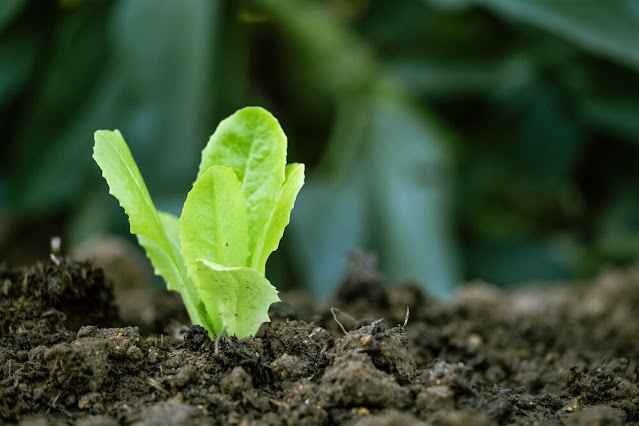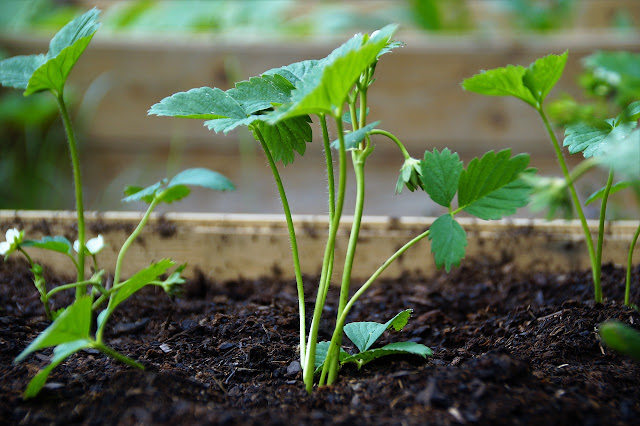There are plenty of methods to get a vegetable garden started, but not all of them are quick, efficient, or cost-effective. When it comes to beginner food gardeners who want to learn how to start a vegetable garden quickly, it's critical to discover a strategy that fits inside a tight budget, takes few expertise, and gets you growing rapidly. The practice of growing one's own food is becoming increasingly popular. People want to know where their food comes from, but if you don't get your garden off to a good start, it will be a weed-infested, time-consuming activity with unsatisfactory results. I'll show you how to start a vegetable garden step by step today. This approach doesn't need a large financial commitment or much construction experience, but it does necessitate some elbow sweat and a limited budget. A vegetable garden, like all good things in life, necessitates a little elbow grease.
Choose the right location
What you can plant depends on how much sunshine your plants receive during the day. You can grow practically anything if you choose an area that receives up to six hours of sunshine every day. Many plants, on the other hand, may thrive in partial sunshine or even partial shade.
Starting off by growing veggies in pots is also a wonderful idea. You don't even need a yard with them; a sunny deck or balcony would suffice.
How to Prepare Your Soil
Your plants are fed by the soil. You'll have weak, sickly plants if your soil is thin and nutrient-deficient. To help your plants flourish, provide plenty of organic stuff.
Vegetable Selection for a Vegetable Garden
Start with simple veggies that are also fruitful as a novice. We've compiled a list of ten simple vegetables for you to try.
- Lettuce
- Green beans
- Radishes
- Tomatoes
- Zucchini
- Peppers
- Beets
- Carrots
- Chard,
- Spinach, or Kale
- Peas
Prepare to care for your plants during the whole growing season. Are you planning a summer vacation? It's important to remember that the optimal time to grow tomatoes is in the summer. You'll need someone to care after the crops if you're gone for a portion of the summer. Alternatively, during the frigid months of late spring and early fall, you might grow cool-season crops like lettuce, kale, peas, and root vegeta
Make sure you're using high-quality seeds. Seed packets are less expensive than individual plants, but you will have wasted your money and time if the seeds do not germinate. A few more pennies invested on seeds in the spring will result in better crops at harvest.
Growing Vegetables in Containers
In a container, almost any vegetable may be cultivated. Vegetable planting in containers provides a number of advantages. To begin with, you have control over the soil and drainage. When you're dumping dirt into a container rather than busting your back tilling in amendments, it's a lot simpler to have wonderful soil. You may position your containers where they will receive the most sunshine, or you can shift them around to follow the sun. Furthermore, lifting your crops a few feet from the ground makes them more difficult for pests to get. Naturally, they'll require more water than in-ground plants, and some of the larger veggies won't fit well in a pot.
Get These Basic Tools
To begin a garden, you will just require the following tools:
Trowel: A trowel can be used to dig tiny holes for transplanting.
Stirrup hoe: With a gentle back-and-forth motion, pick up young weeds at the root with a stirrup hoe.
Garden rake: Level the beds with a garden rake and remove any big stones that may obstruct seedling development.
Related: The Only Gardening Tools You'll Ever Need
Plan for Watering
You'll need a means to water your plants unless you live somewhere that receives a little rain every day. I've used both a timed irrigation system and the manual watering approach. When I water by hand, I have greater luck since I'm also picking weeds and checking for pests. Watering a garden by hand is also a kind of rehabilitation. It normally takes around 15 to 20 minutes every day, and I believe it's a wonderful way to start or finish the day.
Whatever method you choose to water, the idea is that you must have a strategy in place. Get some hoses and watering nozzles, and set aside some time each day to work on your garden.
Fertilize as needed
You'll need to fertilize your plants if you want them to produce healthy fruit. I recommend that you use natural and organic items. To keep the soil fertile, lightly till it by hand and add fertilizer. You may either buy ready-made garden fertilizer or create your own with Epsom salt, eggshells, fish tank water, and kitchen waste.
Controlling Pests
Garden pests have been a problem for gardeners since the beginning of time. Birds will nibble at your tomatoes, and squirrels will take everything they can get their hands on. Then there are the invading insects. They're all hungry, so decide whether to share or keep them out. I propose adopting natural and organic approaches to control insects.
· Deter Destructive Insects
Hand-picking big insects and caterpillars (and dumping them into a pail of sudsy water) is a safe and effective technique to deal with small infestations. Try insecticidal soap sprays, which are available at most garden centers, if you have a large number of insects.
· Fight Fungal Diseases
By watering the soil rather than the leaves of the plants, you can reduce the risk of fungal illnesses. If you're going to use a sprinkler, apply it first thing in the morning so the leaves have time to dry before dark. If a plant becomes infected with a disease, remove it as soon as possible and discard it; do not compost ill plants. Growing disease-resistant vegetable types and rotating the site of your plants each year (crop rotation) are two more ways to avoid disease-causing bacteria from building up their populations.
Harvesting Your Vegetable Garden
The moment has finally arrived! It's now time to harvest the veggies as they ripen. Best harvesting methods for each crop — some prefer scissors, while others may simply be hand-picked. If the plants aren't perennials, such as basil, you'll have to repeat the technique to for them to grow again.


.png)








Comments
Post a Comment